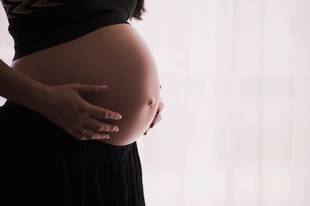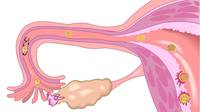
At no other time during the life span are there more serious hazards to development – or hazards of a more serious nature – than during the relatively short period before birth. These may be physical or psychological. Physical hazards have received more scientific attention because they are more easily recognized.
However, psychological hazards are sometimes as serious as physical hazards since they affect the attitudes of significant people toward the developing child. Furthermore, they often intensify physical hazards.
Physical Hazards
Each of the three major subdivisions of the prenatal period involves particular physical hazards. While these do not affect all individuals by any means, they do occur with some frequency and can be serious enough to affect the development of the individual throughout life. Davis and Havighurst pointed out many years ago
What happens to the fetus in the womb, and in the process of its birth; the adequacy of its uterine nutrition; its good or ill fortune at birth with regard to infection or injury, all these often prove as important as its heredity.
Conditions Influencing Physical Hazards. Certain conditions have been found to increase the likelihood that physical hazards will occur or accentuate them. The first of these conditions is the timing of their appearance. It has been recognized by doctors for many years that if the mother-to-be contracts rubella during the first trimester of pregnancy the chances of developmental irregularities in her unborn child, especially in the form of eye or ear defects or a malformation of the heart.
Heinonen et al have reported that female hormones, such as estrogens and progestin, when taken in the early stages of pregnancy may disturb the normal cardiovascular development of the fetus and cause congenital heart diseases. They report that the second and third lunar months, when the heart is developing rapidly, are the most serious times. This is not true if these hormones are taken after the fourth lunar month.
The second condition that increases the likelihood of physical hazards is if the condition is intense or greater than is normal. Some conditions that are known to affect the developing child during the prenatal period are described below; others are suspected of affecting development.
Maternal malnutrition can play havoc with normal development, especially the development of the fetal brain. Excessive smoking and drinking are detrimental to normal development, especially during the periods of the embryo and fetus. This is true also of taking drugs.
Maternal age has been reported to be a condition that intensifies the possibility of physical hazards during the prenatal period. The reason for this is that as women approach the menopause, they frequently have endocrine disorders which slow down the development of the embryo and fetus, causing such developmental irregularities as cretinism, Down’s syndrome, heart malformations and hydrocephalus, all of which involve physical and mental defects. Older women also tend to have smaller babies and to have more complications at birth than do younger women. While paternal age may likewise cause developmental irregularities or stillbirths, this is likely to happen only when paternal age is over sixty years.
Certain kinds of work are more likely to disturb the prenatal development than others. Chemicals and other hazards faced by women working in such places as hospitals, beauty parlors, and factories may be responsible for the increasing number of birth defects and miscarriages during recent years. As Burnham has pointed out, “The potential damage to the fetus and the possible genetic damage which may occur when pregnant women go to work appears to be an important medical problem.”
For reasons as yet unknown, female embryos have a better chance of survival than male embryos. For example, for every 100 females lost through miscarriage, 160 males are lost. Developmental irregularities have also been found to be more common among males than among females.
Multiple births are more hazardous than single births. Fetuses of multiple birth are crowded during the prenatal period, and this inhibits the normal fetal activity essential for development. Prematurity is also more likely in the case of multiple births, as is the possibility of developmental irregularities. Because multiple births are more common among blacks than among whites, this may account in part for the higher infant mortality rate and the greater incidence of developmental irregularities among blacks than among whites.
Common Physical Hazards During The Prenatal Period
Period of the Zygote
Starvation
The zygote will die of starvation if it has too little yolk to keep it alive until it can lodge itself in the uterine wall or if it remains too long in the tube.
Lack of Uterine Preparation
Implantation cannot occur if, as a result of glandular imbalance, the uterine walls are not prepared in time to receive the zygote
Implantation in the Wrong Place
If the zygote becomes attached to a small fibroid tissue in the uterine wall or to the wall of the Fallopian tube, it cannot get nourishment and will die.
Period of the Embryo
Miscarriages
Falls, emotional shocks, malnutrition, glandular disturbances, vitamin deficiency, and serious diseases, such as pneumonia and diabetes, can cause the embryo to become dislodged from its place in the uterine wall, resulting in a miscarriage. Miscarriages that are due to unfavourable conditions in the prenatal environment are likely to occur between the tenth and eleventh weeks after conception.
Developmental Irregularities
Maternal malnutrition; vitamin and glandular deficiencies; excessive use of drugs, alcohol, and tobacco; and diseases, such as diabetes and German measles, interfere with normal development, especially that of the embryonic brain.
Period of the Fetus
Miscarriages
Miscarriages are always possible up to the fifth month of pregnancy; the most vulnerable time is when the woman’s menstrual period would normally occur.
Prematurity
Fetuses who weigh less than 2 pounds 3 ounces have less chance of surviving than heavier fetuses and a greater chance of developing malformations.
Complications of Delivery
Maternal stress affects uterine contractions and is likely to lead to complications during birth.
Developmental Irregularities
Any of the unfavourable environmental conditions present during the period of the embryo will also affect the development of fetal features and retard the whole pattern of fetal development.


















